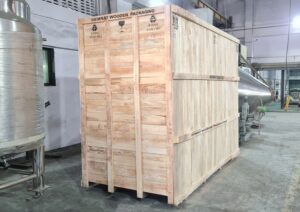What are the alternatives to rubberwood?
Rubberwood is a popular choice for various applications, including furniture, flooring, and packaging. However, there are several alternatives to rubberwood, depending on your specific needs and preferences. Here are some common alternatives:
1. Solid Hardwood:
– Oak, maple, any many more are traditional choices for furniture and packing and other wooden products. They are known for their natural beauty, durability, and long lifespan. However, they are often more expensive than rubberwood.
2. Engineered Wood:
– Engineered products like plywood, particleboard, and medium-density fiberboard (MDF) are composed of wood fibers, particles, or veneers bonded together with adhesive. They offer stability and can be more affordable than solid wood.
3. Bamboo:
– Bamboo is an eco-friendly alternative to rubberwood. It’s fast-growing, making it highly sustainable. Bamboo products are known for their strength and durability. Bamboo furniture and flooring are popular choices.
4. Pine:
– Pine is a softer wood compared to hardwoods like oak or maple. It’s commonly used for export packing, especially in rustic or country-style designs. Pine is less expensive than many hardwoods.
5. Acacia:
– Acacia wood is known for its durability and attractive grain patterns. It’s often used for furniture and flooring. Acacia is particularly popular for outdoor furniture due to its natural resistance to decay and insects.
6. Mango Wood:
– Mango wood is a sustainable alternative known for its unique and varied grain patterns. It’s often used in furniture making and industrial packing, and its eco-friendliness makes it a desirable option.
7. Teak:
– Teak wood is highly durable and naturally resistant to moisture, making it a preferred choice for outdoor furniture. It’s known for its rich, golden color that weathers to a silvery gray over time.
8. Reclaimed Wood:
– Reclaimed wood is salvaged from old buildings, barns, or other structures. It’s a sustainable choice, and each piece often has a unique history and character. Reclaimed wood can be used for furniture, flooring, and decor.
9. Plastic and Composite Materials:
– In some cases, especially for outdoor furniture or packaging, plastic or composite materials like polyethylene, polypropylene, or recycled materials can be used as alternatives to wood. They offer durability and resistance to the elements.
10. Metal:
– For industrial applications, metal, such as steel, aluminum, or stainless steel, can be used as an alternative to wood. Metal packaging can be highly durable and protective.





































